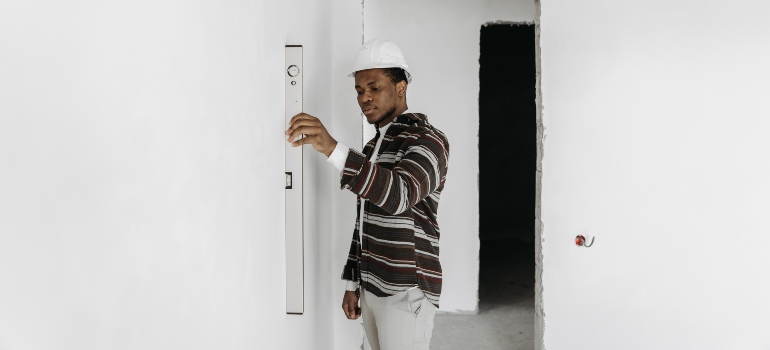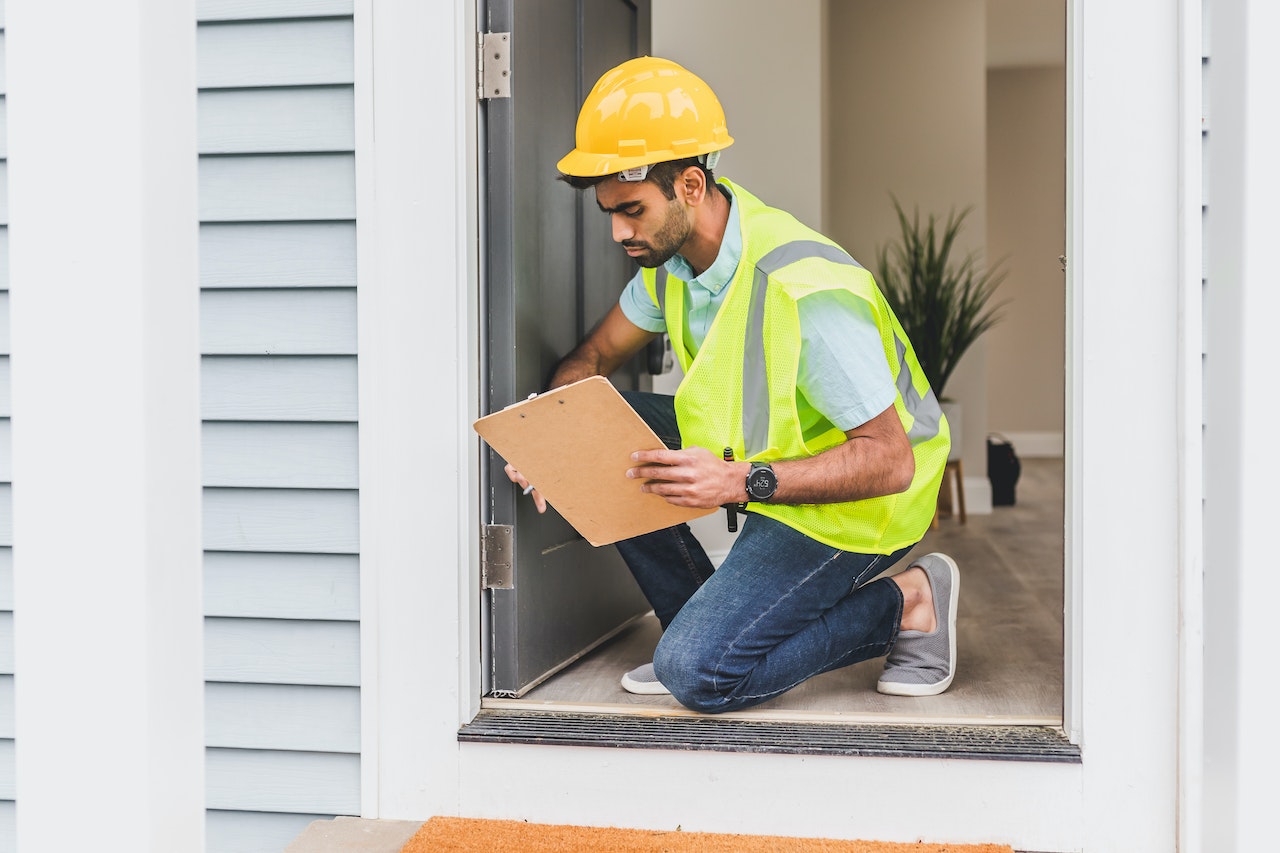Moving to a new home brings excitement and new beginnings. Amidst the chaos of packing and unpacking, it’s crucial not to overlook the vital aspect of your new living space — the HVAC system. HVAC systems play a pivotal role in ensuring comfort and maintaining indoor air quality. That’s why a professional HVAC inspection after a move is essential. After you move with a company you found by reading Verified Movers reviews, enlist the expertise of trained technicians. They can help you can identify potential issues, ensure optimal system performance, and enhance energy efficiency. From safeguarding your health to prolonging the lifespan of your HVAC equipment, the benefits of a thorough inspection are numerous, making it an indispensable step in settling into your new abode.
Assessing System Condition: Ensuring Proper Functionality
Evaluating equipment performance is a crucial step in a professional HVAC inspection after a long distance move. Testing the heating and cooling functions of your system allows technicians to ensure that it operates at its optimal capacity. This evaluation not only verifies that the HVAC system can provide the desired comfort levels but also helps identify any deficiencies or malfunctions that may have occurred during the moving process.

In addition to evaluating performance, a thorough inspection aims to detect potential issues and identify damaged or worn components. Moving can put stress on HVAC systems, leading to problems such as leaks, loose connections, or compromised airflow. If you identify these issues early on, professionals can address them promptly, preventing further damage and restoring the system’s efficiency.
Addressing post-move stress is another vital aspect of the inspection. Relocation can impact HVAC systems due to changes in environmental conditions and installation settings. A comprehensive assessment allows technicians to evaluate the system’s performance in its new location, ensuring that it adapts well to the surroundings and operates optimally.
Indoor Air Quality Assessment: Promoting a Healthy Living Environment
A professional HVAC inspection goes beyond evaluating system functionality—it also focuses on assessing and improving indoor air quality. This crucial aspect ensures a healthy living environment for you and your family.
The inspection begins with checking the air filters. Over time, filters accumulate dust, dirt, and other particles that can hinder airflow and reduce air quality. Hiring a professional cleaner after a move or replacing filters as needed is essential for optimal airflow and filtration efficiency. Moreover, inspecting ductwork is another important aspect of the assessment. Efficient airflow is vital for maintaining proper indoor air quality. Technicians examine ductwork for leaks, blockages, or contaminants that may have accumulated during the move.
Addressing allergens and indoor pollutants
Addressing allergens and indoor pollutants is a key focus of a professional HVAC inspection. If professionals identify and mitigate sources of allergens and pollutants, such as dust, pet dander, or mold, the inspection helps create a healthier respiratory environment. This is particularly important if anyone in your household suffers from allergies or respiratory conditions, and that is why professional HVAC inspection after a move is crucial.
Energy Efficiency Optimization: Saving on Utility Costs
An inspection not only ensures comfort and indoor air quality but also prioritizes energy efficiency, leading to substantial savings on utility bills. An important step in achieving energy efficiency is checking insulation and weather stripping. Once they seal air leaks, technicians prevent energy waste and maintain a consistent indoor temperature, reducing the workload on your HVAC system.

Extending HVAC System Lifespan: Protecting Your Investment
Routine maintenance is a key factor in preserving system efficiency and preventing costly repairs. Trained technicians perform essential maintenance tasks such as inspecting and cleaning components, checking electrical connections, and testing system performance. Therefore, maintenance helps keep your HVAC system operating at its best, minimizing the risk of unexpected breakdowns.
Cleaning and lubrication are crucial for ensuring proper operation and reducing wear and tear on system components. Accumulated dirt, dust, and debris can impair performance and strain the system. Technicians clean the various parts, including coils, fans, and motors, while also lubricating moving parts to reduce friction and enhance efficiency.
Timely repairs are another vital aspect of extending the HVAC system’s lifespan. During the inspection, technicians can detect small issues or signs of wear and address them promptly. And if they address these problems early, it prevents them from escalating into major, costly repairs down the line.
Safety and Compliance: Addressing Potential Hazards
During a professional HVAC inspection, the focus on safety and compliance is paramount. Carbon monoxide detection takes center stage in the inspection. Technicians thoroughly check the proper functioning of safety devices such as carbon monoxide detectors. This critical step ensures early detection of any potential leaks or malfunctions, mitigating the risks associated with carbon monoxide poisoning.
Gas and electric system checks are diligently performed to verify safe operations and connections. Technicians meticulously examine gas lines, valves, and electrical components to identify and rectify any potential hazards or faulty connections. This comprehensive assessment minimizes the chances of gas leaks, electrical malfunctions, and potential fire hazards, ensuring a safe operating environment.

Moreover, complying with local codes and regulations is diligently adhered to. Technicians ensure that the HVAC system meets all necessary safety guidelines, installation requirements, and building codes.
Energy-Saving Tips: Educating Homeowners on Optimizing HVAC Efficiency
When it comes to HVAC systems, optimizing efficiency not only helps reduce energy consumption but also lowers utility bills and promotes environmental sustainability. Here are some energy-saving tips that can make a significant impact:
- Utilize programmable thermostats effectively: Set temperature schedules based on your daily routines to ensure your HVAC system operates at desired levels only when necessary, reducing energy waste during periods of absence or sleep.
- Ensure proper insulation: Adequate insulation helps maintain a consistent indoor temperature, preventing heat loss or gain. This reduces strain on your HVAC system and improves overall efficiency.
- Optimize ceiling fan usage: Use ceiling fans in conjunction with your HVAC system to circulate air and create a comfortable environment.
- Seal air leaks: Identify and seal any gaps or cracks around windows, doors, and ductwork to prevent air leakage. This helps maintain the desired indoor temperature and reduces the need for constant heating or cooling.
Unlocking the Full Potential: The Power of a Professional HVAC Inspection After a Move
A professional HVAC inspection after a move provides key benefits that cannot be overlooked. Ensuring system functionality, assessing indoor air quality, optimizing energy efficiency, addressing potential hazards, and providing expert recommendations, are just some of the benefits that set the foundation for a comfortable, safe, and cost-effective living environment. Investing in post-move inspections preserves the HVAC system’s lifespan, prevents costly repairs, enhances air quality, reduces utility costs, and protects your long-term investment. Embracing professional care and maintenance so you can enjoy a home that is comfortable, energy-efficient, and free from potential hazards.



